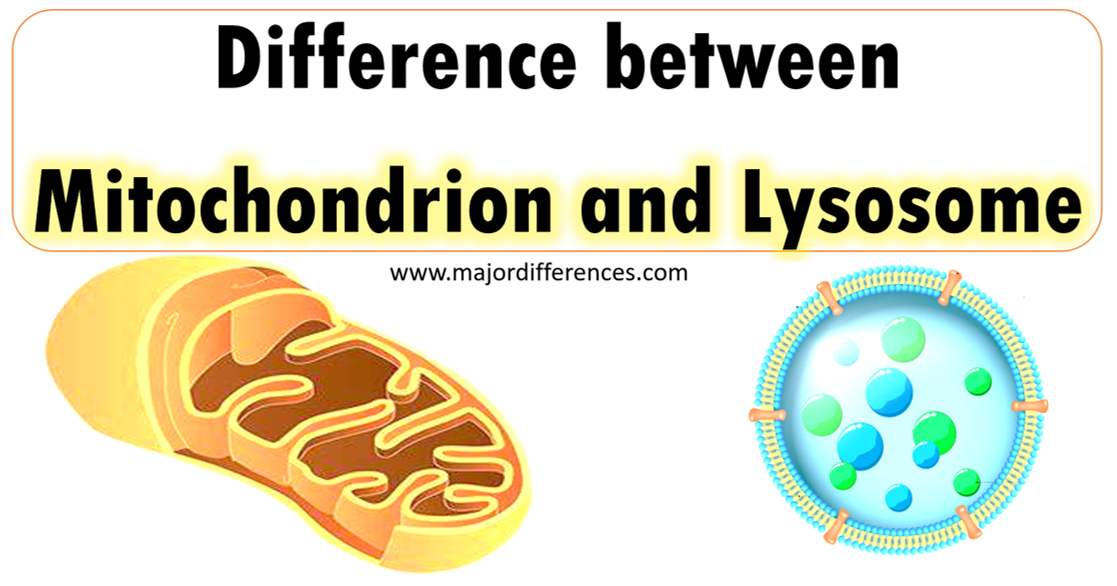Cell is the basic structural and functional unit of life. Organelles are small often membrane bound sub cellular structures within the cytoplasm that carry out different functions necessary to maintain the normal activities the cell.
In
this post, let us understand the difference between mitochondrion and lysosome.
Both these organelles are present in eukaryotic cells.
|
Mitochondrion |
Lysosomes |
|
Occurrence: Present in all Eukaryotic cells,
both plant and animal cells. |
Present in Eukaryotic cells, Present in animal cells but absent
in some plant cells. |
|
It is a double membrane bound |
It is a single membrane bound |
|
Size and shape: Oval shaped
with size from 0.5 to 10 μm |
Generally spherical small, ranging in size from 0.1-0.5 um, maximum
up to 1. 2 μm. |
|
Semi-autonomous organelle with its own DNA called mtDNA
(Mitochondrial DNA) |
Lysosome lacks DNA |
|
Mitochondrion produces energy in the form of ATP for cellular
activities; often called as “powerhouse of the cell or energy factories” |
Lysosome recycles waste materials and worn-out cells and
organelles; often called as cell’s recycling center, or “scavengers of the cell.” |
|
Structure: Double membrane bound organelle
with DNA. Outer membrane is permeable with porin proteins and inner membrane
has infoldings called cristae which is the site of electron transport chain
and associated ATP production. The central fluid filled matrix has enzymes
for citric acid cycle and beta oxidation. |
Spherical vesicles made up of a lipid bilayer that encloses
fluid with variety of powerful hydrolytic digestive enzymes. An internal
acidic pH is maintained by ATP driven proton pump on the membrane. |
|
Formation: Self-replicating organelle by fission |
Lysosomes are formed by the fusion of vesicles from the Golgi
complex with endosomes that contain molecules taken up from the outside of
the cell |
|
Major Functions: ATP synthesis, Beta
oxidation of fatty acids. |
Major Functions: digestion of
macromolecules, old cell parts, and microorganisms or pathogens, autolysis or
cellular autophagy |
|
Mitochondrial disease is a group of
disorders caused by mitochondrial dysfunction. Example: Leigh syndrome, Kearns-Sayre syndrome. |
Lysosome storage diseases: a
genetic mutation that affects the activity of one or more acid hydrolases
leading to accumulation of corresponding macromolecule. Gaucher disease, Tay-Sachs disease, Hurler syndrome |

Post a Comment
We Love to hear from U :) Leave us a Comment to improve this site
Thanks for Visiting.....